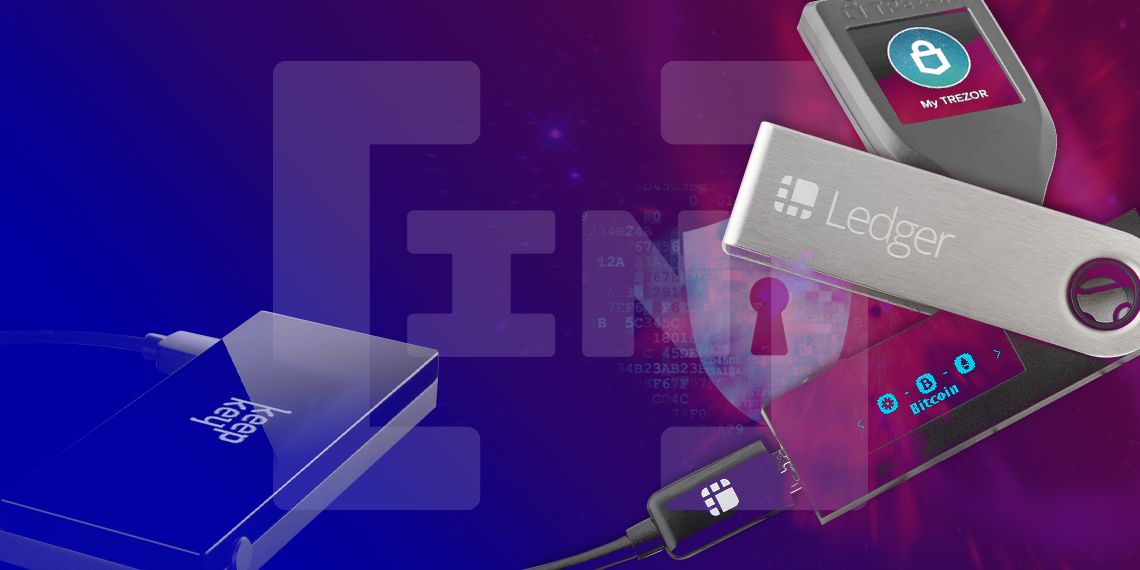A hardware wallet may be the safest way to store crypto assets for most, but in recent years this niche market has expanded and started offering enough options to confuse new users. This in-depth review will cover all the major options available on the market to make choice easier.
The wallets covered by this review include Ledger’s X and Nano S, SatoshiLabs’ Trezor One and Trezor Model T, ShapeShift’s KeepKey, Status’ Keycard and Coinkite’s Coldcard and Opendime.
Ledger hardware wallets — the market leader for a reason
The hardware wallets manufactured by Ledger examined to write this article — namely the Ledger X and Nano S — make it clear that this firm has earned its position as the market leader in this space. Both the devices are very discreet and support a very lengthy list of crypto assets, although the pricier and newer Ledger X is the best choice for almost every scenario. These two wallets are supported by the Ledger Live companion software, which allows for updating the device and managing the apps that it houses, while also doubling as a wallet for many of the crypto assets that the devices can guard. To manage the assets kept on the hardware wallet, the user needs to have the corresponding application installed on the device. This is where one of the main differences between the Ledger X and the Nano S is: while in my testing the Ledger Nano S was unable to hold even ten apps installed at the same time, I was unable to reach the storage limit of the Ledger X which is advertised to hold up to 100 installed applications. A noteworthy detail is that deleting the application needed to manage a given cryptocurrency does not result in losing the corresponding assets. Those tokens just won’t be available until the appropriate application is installed again, so this limitation is just a mild inconvenience that Ledger Nano S users have to endure. Both the Ledger X and the Nano S can be used with a computer, Mac or mobile device — be it Android or iOS. Still, only the Ledger X can be used through a Bluetooth connection, although this functionality is currently confined to the mobile version of the Ledger Live companion application. The last advantage of the Ledger X over the Nano S is that the latter has a much smaller and lower-resolution screen. This screen is used when checking that the address you are sending crypto assets is the one you mean to send the assets to and this can be done much more easily with Ledger X’s screen since it allows for an entire address to fit on the screen at the same time. While the Ledger X has clear advantages over its older brother, it comes a little pricier at $119, as opposed to the Nano S’ lower price tag of $59. The right choice largely depends on how often and how quickly you need to access the assets you hold on the devices as this determines how much the Ledger X’s extra convenience is worth to you.Trezor devices — the contender for the top spot
SatoshiLabs’ Trezor One and Trezor Model T hardware wallets are also well-known. The two devices produced by this firm are not as similar to one another as the Ledger devices, but both still support about one thousand crypto assets. The Model T has a high-resolution color touch screen, a Micro SD card slot — which so far can not be used — and a latest-generation USB-C connector. The Micro SD is supposed to enable signing transactions on the device without directly connecting it to a computer and transmitting them to the network from another device. The Trezor One is smaller and has a much smaller single-color screen. Just like any other hardware wallet covered by this review, both SatoshiLab’s wallets require the user to install dedicated software on their computer. This software can be the Google Chrome browser extension built for the Trezor wallets, a third-party web or installed wallet, or even a mobile application. Just like Ledger’s, those wallets are widely supported by third-party software developers. The Trezor One can be purchased on the producer’s website for about $69, while the Trezor Model T is particularly costly, being sold for over $210 in the official shop.KeepKey — nice, but limited
The KeepKey is much bigger than the other hardware wallets featured in this article and has a surprisingly large black and white screen and a nice design. On the other hand, the device’s functionalities are significantly limited. A big part of this lack in features is caused by limited third-party app support, which in turn is presumably attributable to the small number of users who chose this device over its competitors.The last time I used the KeepKey — in March — I encountered some bugs while using its dedicated software. While I am not sure if I was just more fortunate this time or the bugs were ironed out, I have not experienced the same issues when recently using this device again.Those users who prefer to avoid using the dedicated native software as much as possible can use the web-based trading and wallet management interface developed by ShapeShift. The same interface also supports competing wallets produced by Ledger or SatoshiLabs, so this is not an exclusive feature. With only eight cryptocurrencies supported — not counting the ERC-20 compliant Ethereum (ETH)-based tokens — and limited third-party software developer support, KeepKey’s functionality is rather limited. The nice design and feel on their own can hardly justify the price of $49 — just $10 less than the much more useful Ledger Nano S.
Opendime and ColdCard — the best for geeks
Opendime is not so much a hardware wallet as a way to transform cryptocurrency into a physical asset, while the ColdCard is an open-source hardware wallet that is aimed at the more tech-savvy crypto holders. Both the devices are produced by Bitcoin (BTC)-centric hardware manufacturer Coinkite. The Opendime is a device closely resembling a USB stick, but with a more intimidating look that lets you see — and even touch — the printed circuits that its logic runs on. After first connecting the device to a computer, the user is expected to move some random personal data onto the device. This data is then used as a source of randomness when generating the private key that the Opendime will hold. After this stage — called device initialization — is completed, the user can open an HTML file located on the Opendime, much like you were opening a file on just any USB drive. The file opens as a web page in the user’s browser of choice that shows the current balance of the device and its public key to let the user send more assets to it. The balance of the device cannot be spent in any way when the device is in this state.To move the fund from the device, the user needs to physically pierce a hole in a specific way that alters its very visible circuits in a way that enables the user to access the private key which can be used to spend the balance through third-party software wallets.The Opendime is a one-use real-life equivalent of the cyberpunk concept of the credit chip that enables its users to verify its balance before accepting it as a means of payment. The Opendimes sold on its producer’s website only support Bitcoin, but the Litecoin Foundation is also selling a customer version that supports Litecoin (LTC). This device costs $60 for a pack of three, which translates to $20 each. Just like the Opendimes sold on Coinkite’s website, the Coldcard only supports Bitcoin. The device features some particularly advanced functions like partially signed Bitcoin transactions useful, allowing users to sign a transaction and save it on the SD card. The signed transaction can be then sent from another device or co-signed with another key of a multi-signature wallet. The Coldcard does not look as nice as the competing hardware wallets produced by Ledger or SatoshiLabs, but it surely deserves a niche among the Bitcoin users who need access to the advanced functionalities of this device. Still, the limitations in asset support and user-friendliness paired with a price tag of nearly $120 — on par with the Ledger X — means that it is not a device for many.
Keycard – the key to mobile Web 3.0
The Keycard is a unique device that — like the name suggests — exactly resembles your average credit card. The device is open source and can in theory support a wide range of cryptocurrencies and two-factor authentication, but since it is new to the market it can now be only used with the Ethereum wallet, a Web 3.0 browser and messaging app Status. The Keycard contains an NFC chip that allows the smartphone to communicate with the card when it is placed on its back. This enables users to sign transactions, sign into the Status app, and use Ethereum decentralized applications — all while keeping the private key on the card itself. To use the card, the user needs to enter a numerical pin, which should supposedly keep the funds safe even if the card is lost or stolen. This is the cheapest hardware wallet featured in this article, costing only $24.90. NOTE: All of the devices in this article were shipped free of charge to the author of the present article for review purposes. The views expressed here are those of the author’s and do not necessarily represent or reflect the views of BeInCrypto.Disclaimer
In compliance with the Trust Project guidelines, this opinion article presents the author’s perspective and may not necessarily reflect the views of BeInCrypto. BeInCrypto remains committed to transparent reporting and upholding the highest standards of journalism. Readers are advised to verify information independently and consult with a professional before making decisions based on this content. Please note that our Terms and Conditions, Privacy Policy, and Disclaimers have been updated.

Adrian Zmudzinski
Adrian is a journalist based out of Pisa, Italy. He's passionate about cryptocurrency, digital rights, IT, tech and futurology and likes to think about the future in a positive way.
Adrian is a journalist based out of Pisa, Italy. He's passionate about cryptocurrency, digital rights, IT, tech and futurology and likes to think about the future in a positive way.
READ FULL BIO
Sponsored
Sponsored

